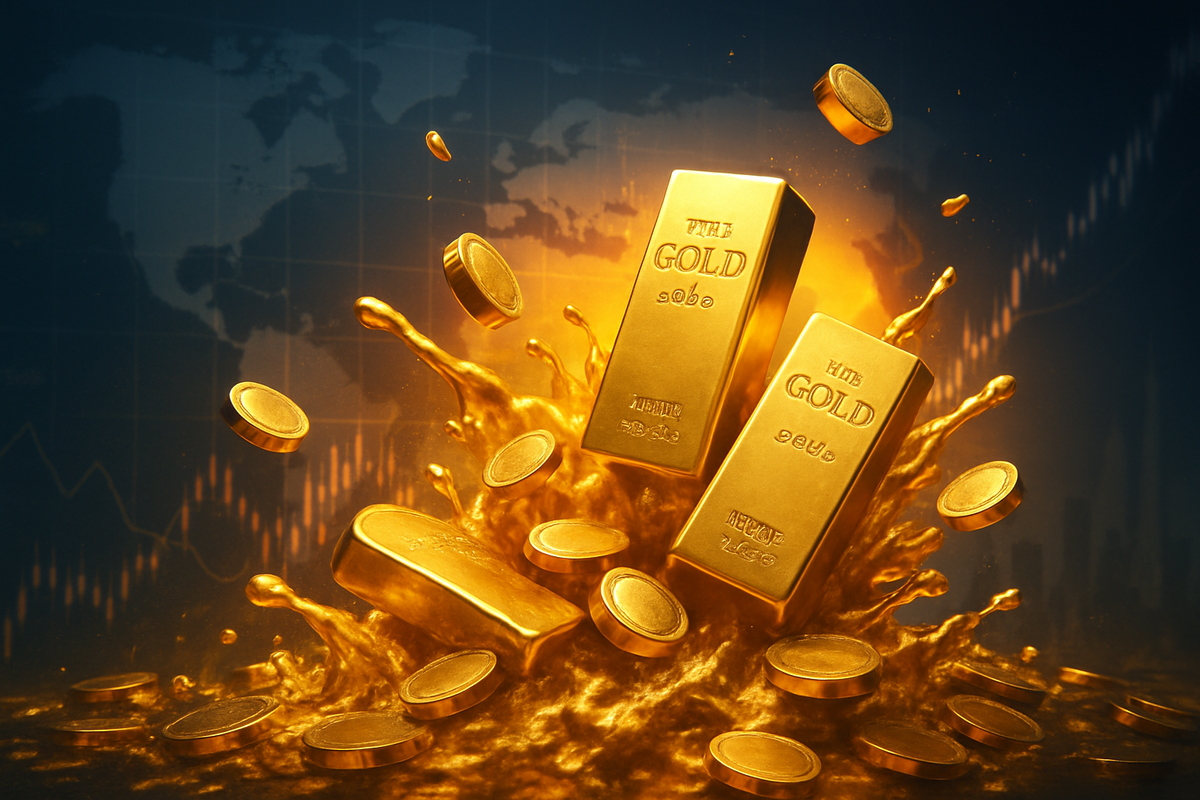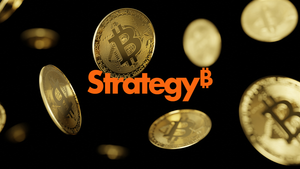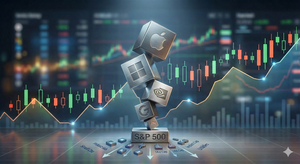
The year 2025 has etched itself into the annals of financial history with an unprecedented gold rally, seeing the precious metal shatter records and surge past the $4,200 per ounce mark. As of October 16, 2025, gold prices have touched an all-time high of approximately $4,250.73, marking a staggering nearly 60% increase year-to-date. This monumental ascent has captivated global markets, signaling a profound shift in investor sentiment amidst a turbulent confluence of global economic and geopolitical uncertainties.
This historic surge is not merely a fleeting market anomaly but a powerful indicator of fundamental shifts in global financial dynamics. Investors are increasingly flocking to gold as a primary safe-haven asset, reflecting a growing lack of confidence in traditional financial instruments and a collective search for wealth preservation in an increasingly volatile world. The rally underscores a fundamental shift in investor psychology, with gold now perceived as an "asset for all occasions," capable of rising during periods of both risk aversion and risk appetite, and serving as an optimal hedge against a unique combination of risks including stagflation, recession, currency debasement, and U.S. policy uncertainties.
The Golden Tide: Unpacking the 2025 Surge
The 2025 gold rally is characterized by its dramatic scale and sustained momentum, with gold prices breaking multiple records throughout the year. The metal surpassed the $4,000 per ounce threshold in the third quarter and continued its climb well above $4,200 by October. This marks the biggest gold rally in modern history, leaving both U.S. stocks and bonds far behind and demonstrating an ability to establish consecutively higher support levels with less volatility compared to previous bull runs.
Several interwoven factors have converged to create this "perfect storm" for gold. Geopolitical tensions, including ongoing conflicts in Eastern Europe, instability in parts of Asia, and renewed U.S.-China trade friction, have heightened global nervousness. Domestic political uncertainty in major economies, notably the U.S. with President Donald Trump's return and his administration's critiques of the Federal Reserve, have also contributed to safe-haven demand. Expectations for anticipated interest rate cuts by the U.S. Federal Reserve later in 2025 have weakened the U.S. dollar and reduced real yields, making non-yielding assets like gold more attractive. Persistent inflation, remaining stubbornly above target levels in many major economies, has reinforced gold's appeal as an inflation hedge. Furthermore, a global financial shift is underway, with central banks reducing their reliance on the U.S. dollar and diversifying their reserves into gold, with purchases estimated around 900 tonnes in 2025. This year has also seen robust demand from both institutional and individual investors, including significant inflows into gold Exchange Traded Funds (ETFs) and physical gold purchases.
Corporate Fortunes: Who Wins and Who Loses
A sustained gold rally of this magnitude inevitably creates distinct winners and losers across various public companies and sectors.
Gold Mining Companies stand out as the primary beneficiaries. Their revenues and profit margins expand considerably as the selling price of gold increases while their all-in sustaining costs (AISC) tend to remain relatively stable. This operating leverage allows earnings to rise at a faster pace than costs, making previously uneconomical lower-grade deposits viable and spurring increased exploration and development. Giants like Newmont Corporation (NYSE: NEM), the world's largest gold producer, and Barrick Gold Corporation (NYSE: GOLD), known for its Tier One assets, are seeing significantly expanded profit margins and increased stock valuations. Other beneficiaries include Agnico Eagle Mines Limited (NYSE: AEM), Alamos Gold Inc. (TSX: AGI, NYSE: AGI), and Kinross Gold Corporation (NYSE: KGC), all poised for enhanced profitability.
Gold-Backed Exchange-Traded Funds (ETFs) also experience substantial inflows as investors seek easy exposure to rising gold prices. Products like SPDR Gold Shares (NYSE Arca: GLD) and iShares Gold Trust (NYSE Arca: IAU) are witnessing significant asset under management (AUM) growth. ETFs investing in mining companies, such as VanEck Gold Miners ETF (NYSE Arca: GDX) and VanEck Junior Gold Miners ETF (NYSE: GDXJ), offer leveraged exposure and often outperform physical gold ETFs during sustained rallies. Financial institutions involved in gold trading and providing financing to the mining sector, like bullion banks such as StoneX Group Inc. (NASDAQ: SNEX), also benefit from heightened activity and associated fees.
Conversely, Jewelry Retailers face significant headwinds. Higher gold prices directly increase the cost of their raw materials, which is then passed on to consumers. This typically leads to a decrease in consumer demand, especially in price-sensitive markets, as gold jewelry becomes less affordable. Retailers like Signet Jewelers Limited (NYSE: SIG), with brands such as Kay Jewelers and Zales, are likely experiencing pressure on sales volumes. Even luxury brands like Tiffany & Co. (now part of LVMH Moët Hennessy Louis Vuitton) may see shifts in consumer behavior. However, some retailers may adapt by focusing on investment-grade pieces or offering remodeling services, capitalizing on high scrap gold values.
A New Financial Order: Wider Significance and Asia's Influence
The 2025 gold rally signifies a profound erosion of confidence in traditional financial systems, currency stability, and the existing geopolitical order. It fits into broader industry trends reflecting global economic instability, persistent inflation, and a weakening U.S. dollar, alongside a growing de-dollarization movement. This environment prompts a flight to safe-haven assets, with gold reaffirming its role. The rally also has ripple effects on other precious metals, with silver notably surging over 80% year-to-date, reaching near-record highs of over $52 per ounce, as investors look for alternative exposure. Regulatory bodies are closely monitoring market stability and central bank reserve management strategies, as the shift towards gold has significant implications for global financial architecture.
Historically, this rally draws parallels with the 1970s gold bull market, which saw gold soar from $35 to $850 an ounce amidst high inflation, U.S. dollar weakness, and geopolitical upheaval. Similar to that era, the 2025 rally is driven by a potent mix of geopolitical tensions, inflation concerns, and a weakening dollar/de-dollarization push.
Crucially, Asia stands as a paramount driver of this global gold trend, consistently accounting for over half of global gold demand and effectively shifting the control of the gold market from the West to emerging markets. Asian central banks, particularly the People's Bank of China (PBOC), have been aggressively increasing gold reserves to diversify away from traditional reserve currencies, notably the U.S. dollar. India's Reserve Bank of India (RBI) is also a significant buyer. This strategic accumulation is driven by diversification, hedging against economic uncertainties, and seeking to back up national currencies during market disorder. Individual consumer demand in countries like India and China, where gold holds immense cultural and traditional significance, also remains robust. Gold is integral to weddings and festivals in India, while in China, it symbolizes wealth and prosperity. This massive demand from Asia absorbs a significant portion of the world's gold supply, exerting sustained upward pressure on prices and solidifying Asia's influence on global gold flows.
The Road Ahead: Navigating Gold's Future
The future trajectory of gold, following its historic 2025 rally, presents a complex yet largely bullish outlook for the market and related industries.
In the short-term, while the momentum is strong, technical indicators suggest gold is currently overbought, hinting at a potential for profit-taking and minor corrections. A dip below $4,050 could trigger swift selling. However, the underlying drivers – anticipated Federal Reserve rate cuts, ongoing geopolitical tensions (especially U.S.-China trade friction), robust central bank buying, and persistent inflation – are expected to provide strong support, with near-term targets at $4,250 and potentially $4,300. The long-term trend for gold is generally considered bullish, with some analysts predicting prices could reach $5,000 per ounce by 2026 or even $10,000 per ounce by the end of the decade. This is underpinned by structural demand shifts like global diversification and de-dollarization efforts by central banks, coupled with persistent inflation concerns and supply constraints from new mine development.
Strategic pivots are essential for companies and investors. Gold mining companies will continue to boost exploration and expand operations, with high prices making marginal projects viable. M&A activity is likely to accelerate as companies seek quality assets. Jewelry retailers, particularly in emerging markets, will need to adapt by promoting minimalist designs, offering lower-carat gold options, or encouraging gold recycling due to increased input costs. Investors should consider a dollar-cost averaging (DCA) strategy to mitigate volatility when buying at record highs and maintain diversification. Institutional investors are increasingly allocating capital to gold and mining equities, recognizing their role as inflation hedges and diversifiers.
Emerging markets will continue to drive demand. Their strong cultural affinity for gold and central banks' diversification strategies ensure sustained buying. However, challenges include potential dampening of jewelry demand due to soaring prices and pressure on global supply chains if production cannot keep pace. Potential scenarios include a continued bull run (most likely short-to-medium term) driven by ongoing uncertainties, or a short-term correction/consolidation phase. Long-term, gold's role as a cornerstone in a de-dollarized global system, with enhanced sovereign reserve status, appears increasingly probable.
Golden Horizon: A Concluding Perspective
The historic 2025 gold rally is more than just a price surge; it is a powerful reflection of profound shifts in global economic and geopolitical landscapes. The key takeaways underscore gold's reaffirmed status as the premier safe-haven asset, its role as a hedge against persistent inflation and currency debasement, and the significant impact of shifting global financial dynamics, particularly the ongoing de-dollarization trend driven by central banks.
Moving forward, the market remains poised for continued strength, though investors should brace for potential short-term volatility and corrections after such a rapid ascent. The lasting impact of this rally will be a recalibration of investor psychology, with gold firmly established as an indispensable component of diversified portfolios, offering fundamental stability amidst uncertainty. The "east-to-west power transition" in gold ownership, largely spearheaded by robust Asian demand, will continue to reshape global financial architecture.
Investors should closely watch Federal Reserve monetary policy, geopolitical developments, U.S. dollar strength, and inflation data in the coming months. Monitoring central bank activity and technical indicators will also be crucial for navigating potential market movements. In an increasingly uncertain world, gold has proven its mettle, and its journey is far from over.
This content is intended for informational purposes only and is not financial advice






